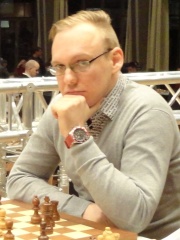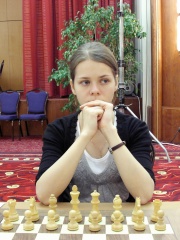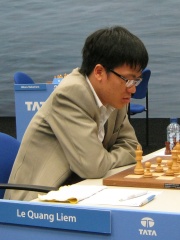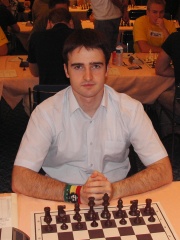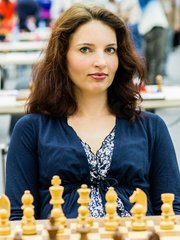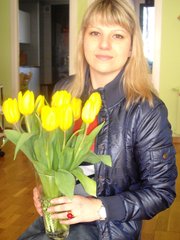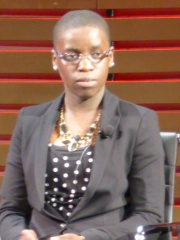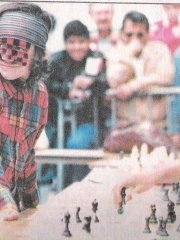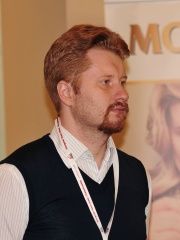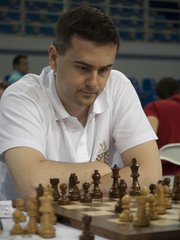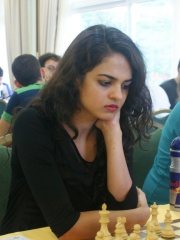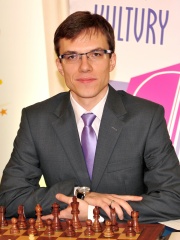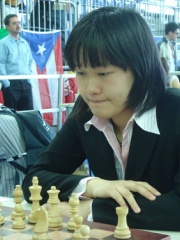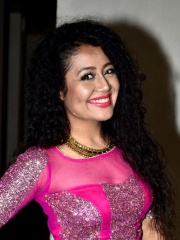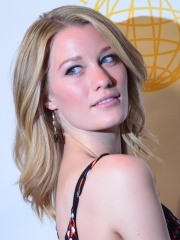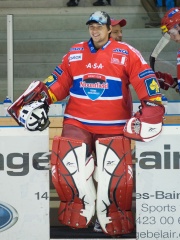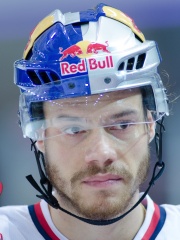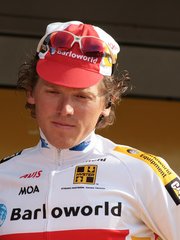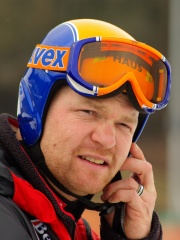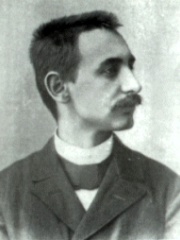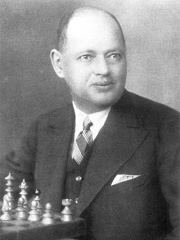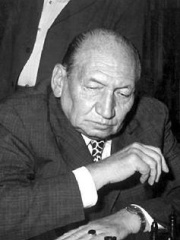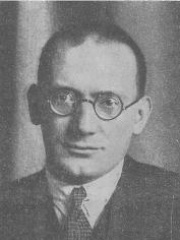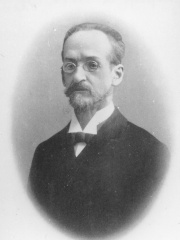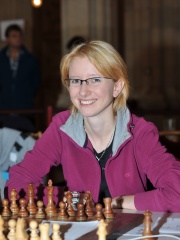CHESS PLAYER
Markus Ragger
1988 - Today
 Markus Ragger
Markus Ragger
Markus Ragger (born 5 February 1988) is an Austrian chess grandmaster. He won the Austrian Chess Championship in 2008, 2009 and 2010 and has played the first board for Austria in the Chess Olympiads since 2008. In October 2016, he became the first Austrian to reach a FIDE rating of 2700. His peak rating is 2703, which he reached in February 2017. Read more on Wikipedia
His biography is available in 15 different languages on Wikipedia. Markus Ragger is the 433rd most popular chess player (down from 423rd in 2024), the 1,420th most popular biography from Austria (down from 1,408th in 2019) and the 7th most popular Austrian Chess Player.
Memorability Metrics
Page views of Markus Ragger by language
Among CHESS PLAYERS
Among chess players, Markus Ragger ranks 434 out of 461. Before him are Tatiana Kosintseva, Lê Quang Liêm, Ernesto Inarkiev, Eva Repková, Olga Alexandrova, Phiona Mutesi, and Jeff Sarwer. After him are Vladimir Potkin, Bartłomiej Macieja, Tania Sachdev, Mateusz Bartel, and Zhao Xue.
Most Popular Chess Players in Wikipedia
Go to all RankingsTatiana Kosintseva
1986 - Present
HPI: 38.85
Rank: 427
Lê Quang Liêm
1991 - Present
HPI: 38.74
Rank: 428
Ernesto Inarkiev
1985 - Present
HPI: 38.73
Rank: 429
Eva Repková
1975 - Present
HPI: 38.67
Rank: 430
Olga Alexandrova
1978 - Present
HPI: 38.28
Rank: 431
Phiona Mutesi
1996 - Present
HPI: 38.17
Rank: 432
Jeff Sarwer
1978 - Present
HPI: 37.97
Rank: 433
Markus Ragger
1988 - Present
HPI: 37.95
Rank: 434
Vladimir Potkin
1982 - Present
HPI: 37.44
Rank: 435
Bartłomiej Macieja
1977 - Present
HPI: 37.31
Rank: 436
Tania Sachdev
1986 - Present
HPI: 37.27
Rank: 437
Mateusz Bartel
1985 - Present
HPI: 37.22
Rank: 438
Zhao Xue
1985 - Present
HPI: 37.12
Rank: 439
Contemporaries
Among people born in 1988, Markus Ragger ranks 1,129. Before him are Dani Clos, Clara Paget, Denni Avdić, Neha Kakkar, Mikko Koskinen, and Ashley Hinshaw. After him are Gal Mekel, Jess Wade, Onur Kıvrak, Jakub Kovář, Camilo Sanvezzo, and Lyubov Basova.
Others Born in 1988
Go to all RankingsDani Clos
RACING DRIVER
1988 - Present
HPI: 38.02
Rank: 1,123
Clara Paget
ACTOR
1988 - Present
HPI: 38.02
Rank: 1,124
Denni Avdić
SOCCER PLAYER
1988 - Present
HPI: 37.99
Rank: 1,125
Neha Kakkar
SINGER
1988 - Present
HPI: 37.97
Rank: 1,126
Mikko Koskinen
HOCKEY PLAYER
1988 - Present
HPI: 37.97
Rank: 1,127
Ashley Hinshaw
ACTOR
1988 - Present
HPI: 37.96
Rank: 1,128
Markus Ragger
CHESS PLAYER
1988 - Present
HPI: 37.95
Rank: 1,129
Gal Mekel
BASKETBALL PLAYER
1988 - Present
HPI: 37.95
Rank: 1,130
Jess Wade
PHYSICIST
1988 - Present
HPI: 37.94
Rank: 1,131
Onur Kıvrak
SOCCER PLAYER
1988 - Present
HPI: 37.93
Rank: 1,132
Jakub Kovář
HOCKEY PLAYER
1988 - Present
HPI: 37.93
Rank: 1,133
Camilo Sanvezzo
SOCCER PLAYER
1988 - Present
HPI: 37.92
Rank: 1,134
Lyubov Basova
CYCLIST
1988 - Present
HPI: 37.92
Rank: 1,135
In Austria
Among people born in Austria, Markus Ragger ranks 1,422 out of 1,424. Before him are Amar Dedić (2002), Thomas Raffl (1986), Jacqueline Seifriedsberger (1991), Stefan Schwab (1990), Maximilian Wöber (1998), Christian Pfannberger (1979), Andreas Zuber (1983), and Klaus Kröll (1980). After him are Lumix (2002), Alexander Schlager (1996), Stefan Denifl (1987), and Patrick Wimmer (2001).
Others born in Austria
Go to all RankingsAmar Dedić
SOCCER PLAYER
2002 - Present
HPI: 38.24
Rank: 1,414
Thomas Raffl
HOCKEY PLAYER
1986 - Present
HPI: 38.19
Rank: 1,415
Jacqueline Seifriedsberger
SKIER
1991 - Present
HPI: 38.19
Rank: 1,416
Stefan Schwab
SOCCER PLAYER
1990 - Present
HPI: 38.14
Rank: 1,417
Maximilian Wöber
SOCCER PLAYER
1998 - Present
HPI: 38.10
Rank: 1,418
Christian Pfannberger
CYCLIST
1979 - Present
HPI: 38.06
Rank: 1,419
Andreas Zuber
RACING DRIVER
1983 - Present
HPI: 38.04
Rank: 1,420
Klaus Kröll
SKIER
1980 - Present
HPI: 38.00
Rank: 1,421
Markus Ragger
CHESS PLAYER
1988 - Present
HPI: 37.95
Rank: 1,422
Lumix
MUSICIAN
2002 - Present
HPI: 37.88
Rank: 1,423
Alexander Schlager
SOCCER PLAYER
1996 - Present
HPI: 37.87
Rank: 1,424
Stefan Denifl
CYCLIST
1987 - Present
HPI: 37.87
Rank: 1,425
Patrick Wimmer
SOCCER PLAYER
2001 - Present
HPI: 37.81
Rank: 1,426
Among CHESS PLAYERS In Austria
Among chess players born in Austria, Markus Ragger ranks 7. Before him are Carl Schlechter (1874), Rudolf Spielmann (1883), Erich Eliskases (1913), Ernst Grünfeld (1893), Johann Berger (1845), and Eva Moser (1982).
Carl Schlechter
1874 - 1918
HPI: 63.06
Rank: 1
Rudolf Spielmann
1883 - 1942
HPI: 61.04
Rank: 2
Erich Eliskases
1913 - 1997
HPI: 57.79
Rank: 3
Ernst Grünfeld
1893 - 1962
HPI: 57.70
Rank: 4
Johann Berger
1845 - 1933
HPI: 55.22
Rank: 5
Eva Moser
1982 - 2019
HPI: 40.32
Rank: 6
Markus Ragger
1988 - Present
HPI: 37.95
Rank: 7
